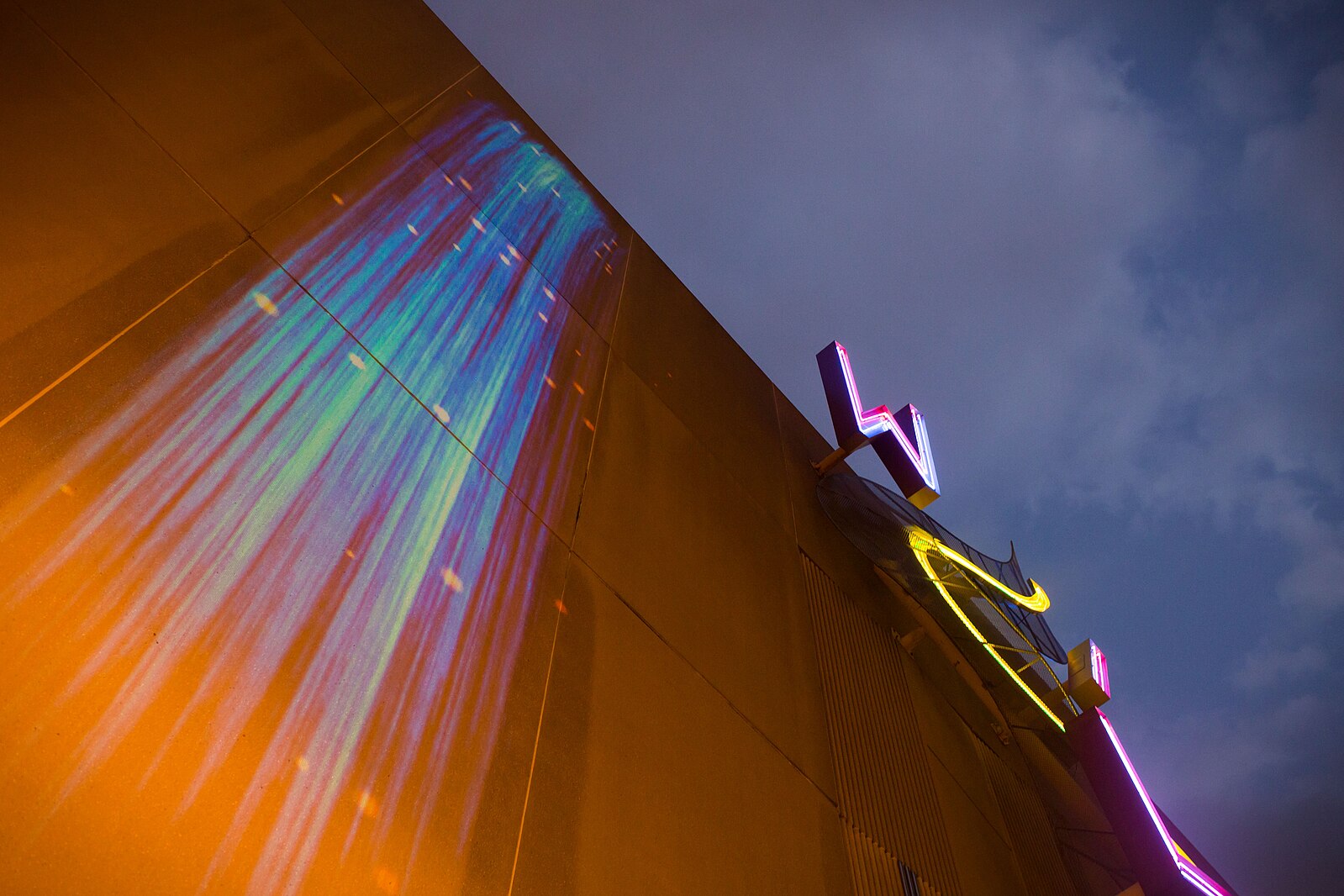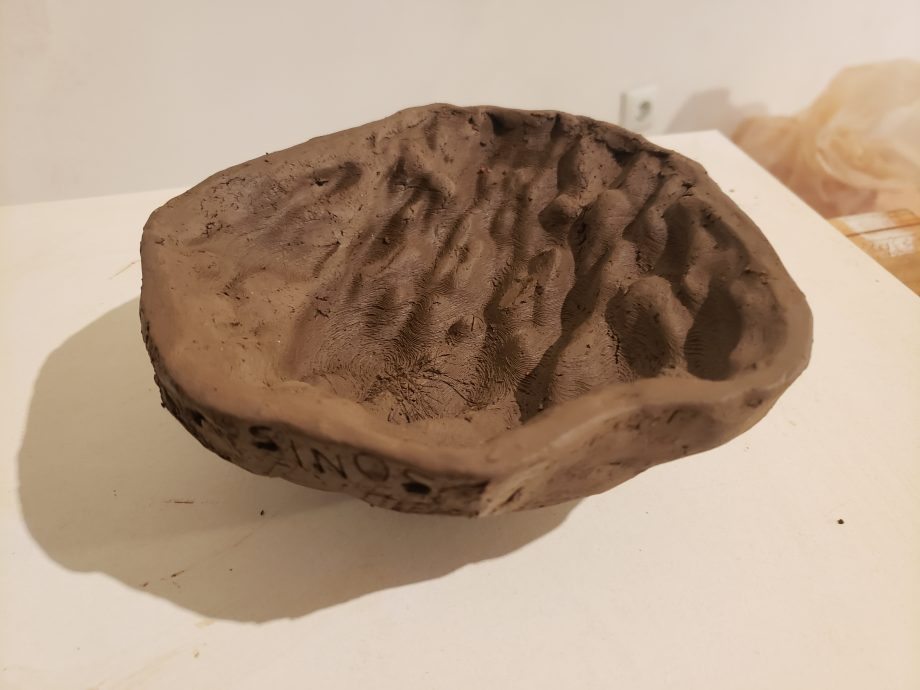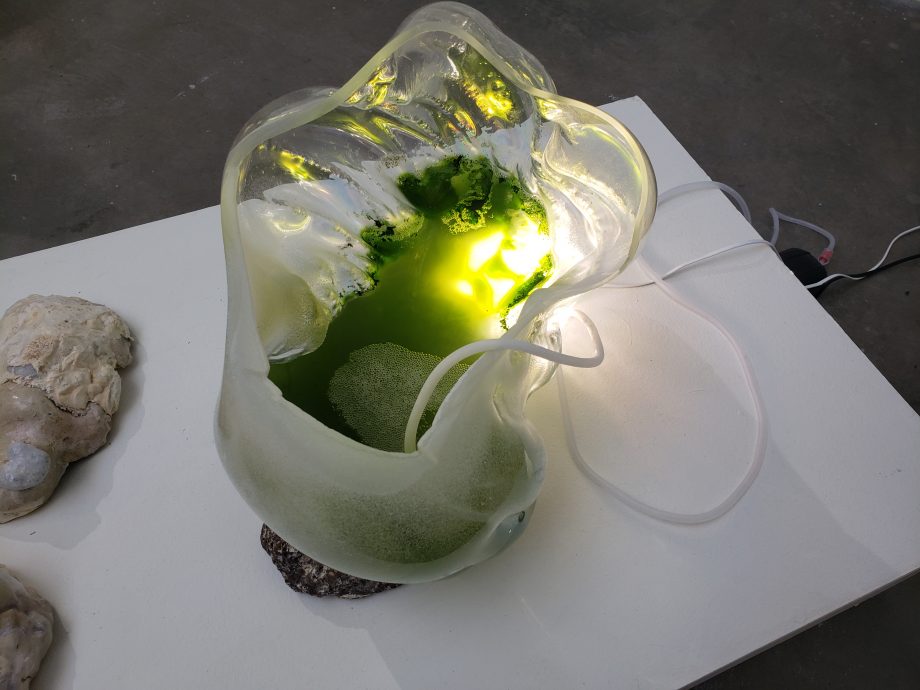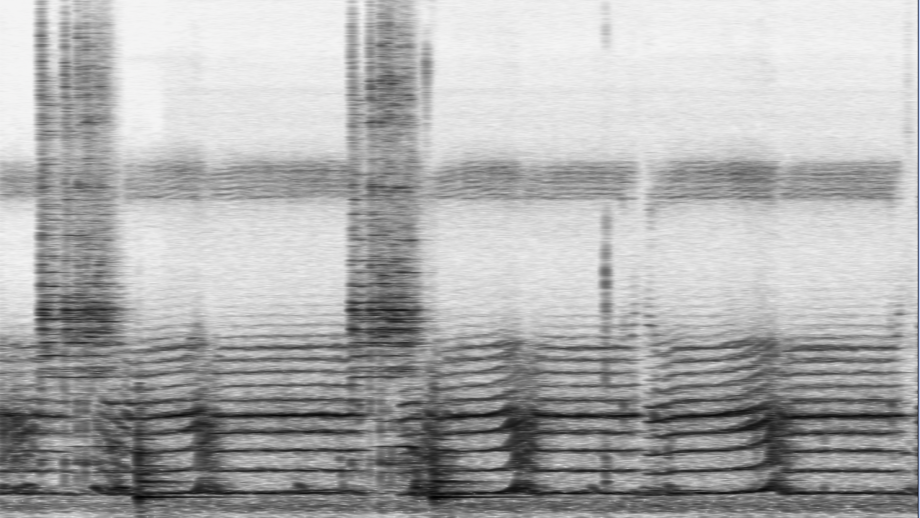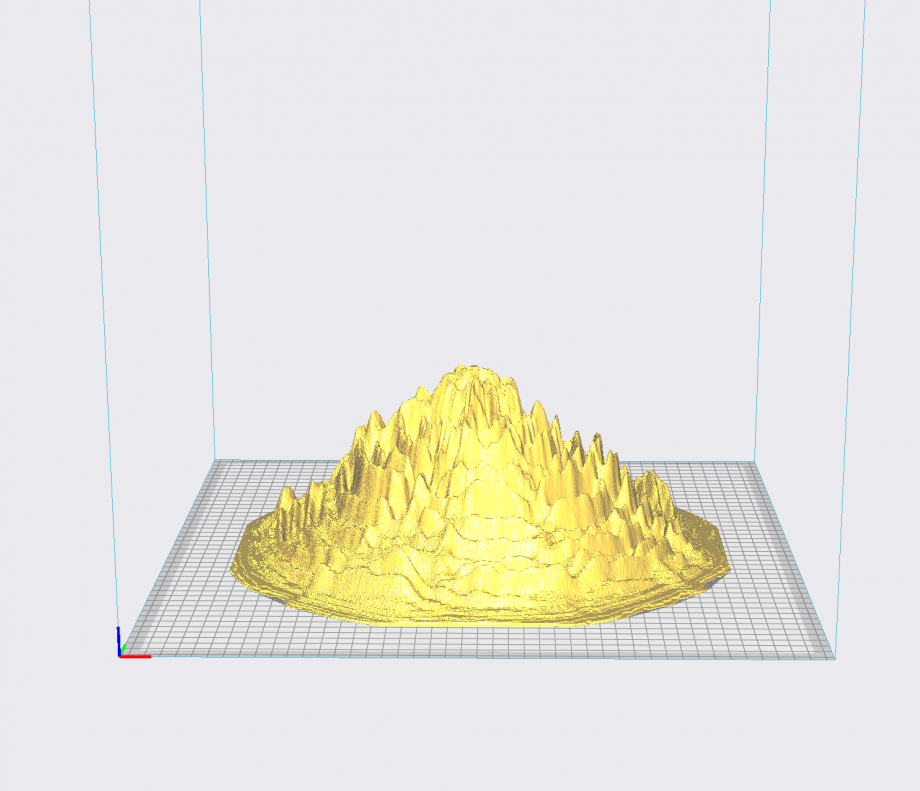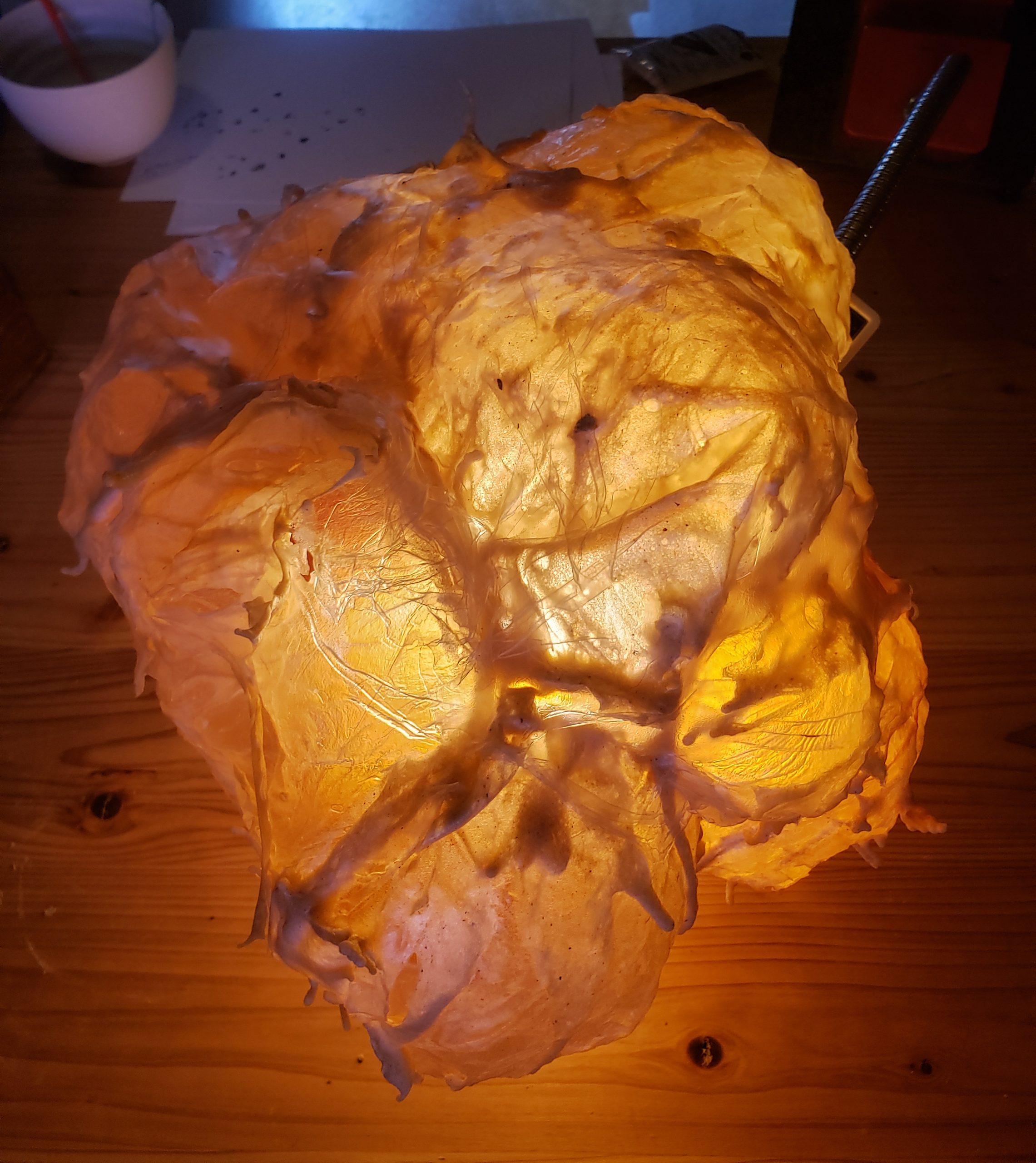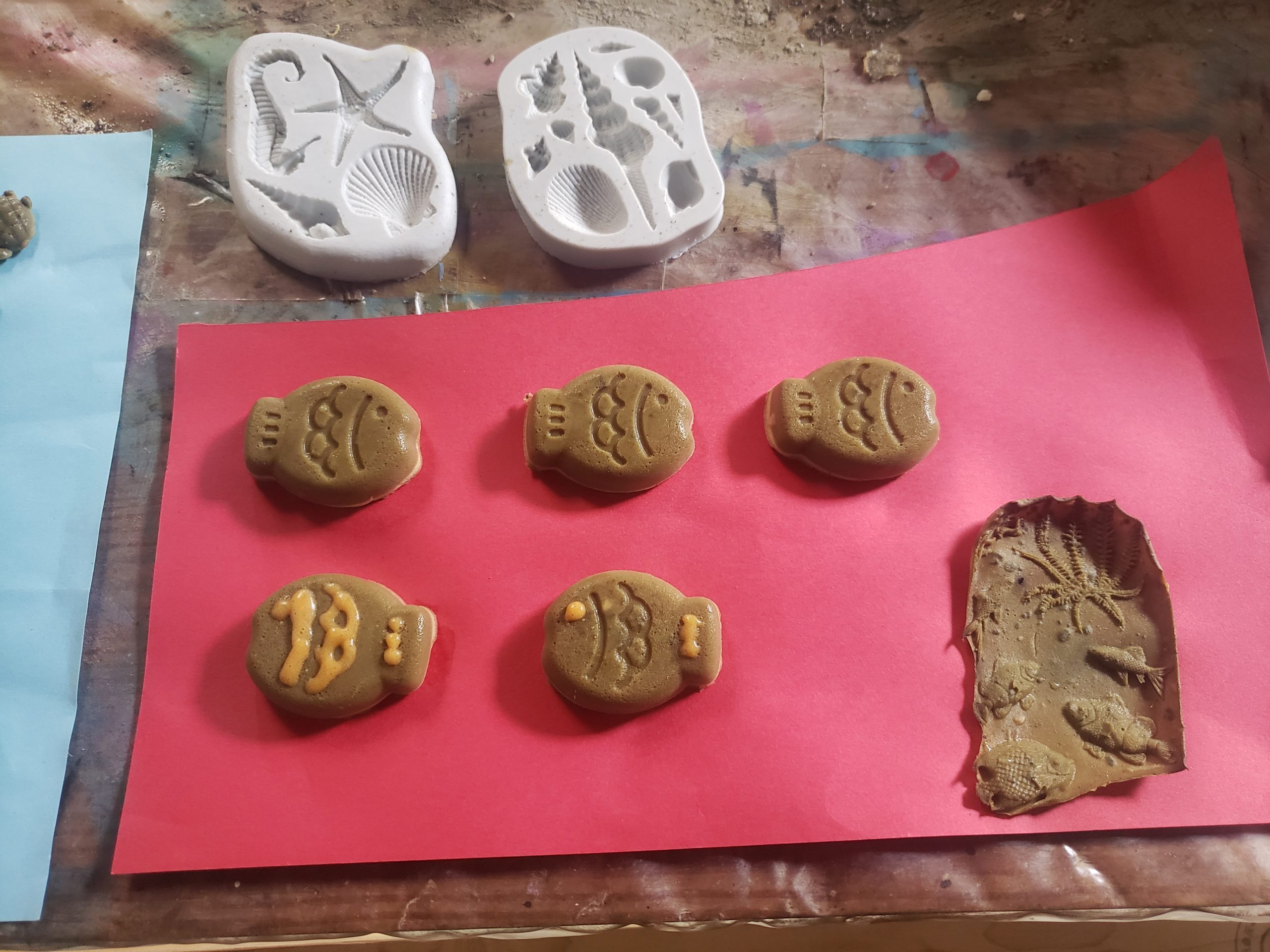Event report
August 14, 2025
Hanna Gabo Karaso
Intern, FabCafe Tokyo
The environmental art movement expanded globally in the 1960s and 1970s. As people started paying more attention to environmental issues, artists began creating works that were closely connected to nature. Many of these pieces were made on-site, using natural or recycled materials, and they were often exhibited outside of traditional gallery spaces. Environmental artists often emphasized sustainability, working with scientists, and helping their audience think differently about humanity’s relationship with the planet. There are many different ways artists represent their message. For example, land art uses the natural environment itself as a tool for expression, while other types of environmental art use man-made materials, like plastic, metal, or recycled objects, to create their works.
Over time, environmental art expanded into all kinds of interesting directions. Bioartists use living organisms in their work, while others engage with social practice art, where artists collaborate with communities on projects that raise awareness and inspire real change. Some even turn data into visual art, like Andrea Polli, who was the featured speaker for SPCS Talks Vol. 14.
Andrea Polli is an American artist and professor who blends art, science, and technology in her work. She often turns climate and weather data into immersive art that helps people connect with environmental issues on both an emotional and intellectual level. She teaches at the College of Fine Arts and the School of Engineering at the University of New Mexico. Polli often dives into topics like air quality, pollution, and climate change, using her artistic skills to visualize complex data about weather, energy, and other big impacts. Writing for the Royal Society of Arts, Polli said, “Environmentally responsive public artworks can empower communities and encourage dialogue about local issues.”
When discussing her design process, Polli explained her long-standing integration of art and science. A large part of her practice involves teaming up with scientists and engineers to boost public engagement and promote eco-friendly practices. She recounted her experience of meeting a meteorologist at a conference in Los Angeles, which eventually led her to join the U.S. Antarctic Artists and Writers Program. Polli often allows data and programming to guide her work, intervening primarily to make significant aesthetic decisions.
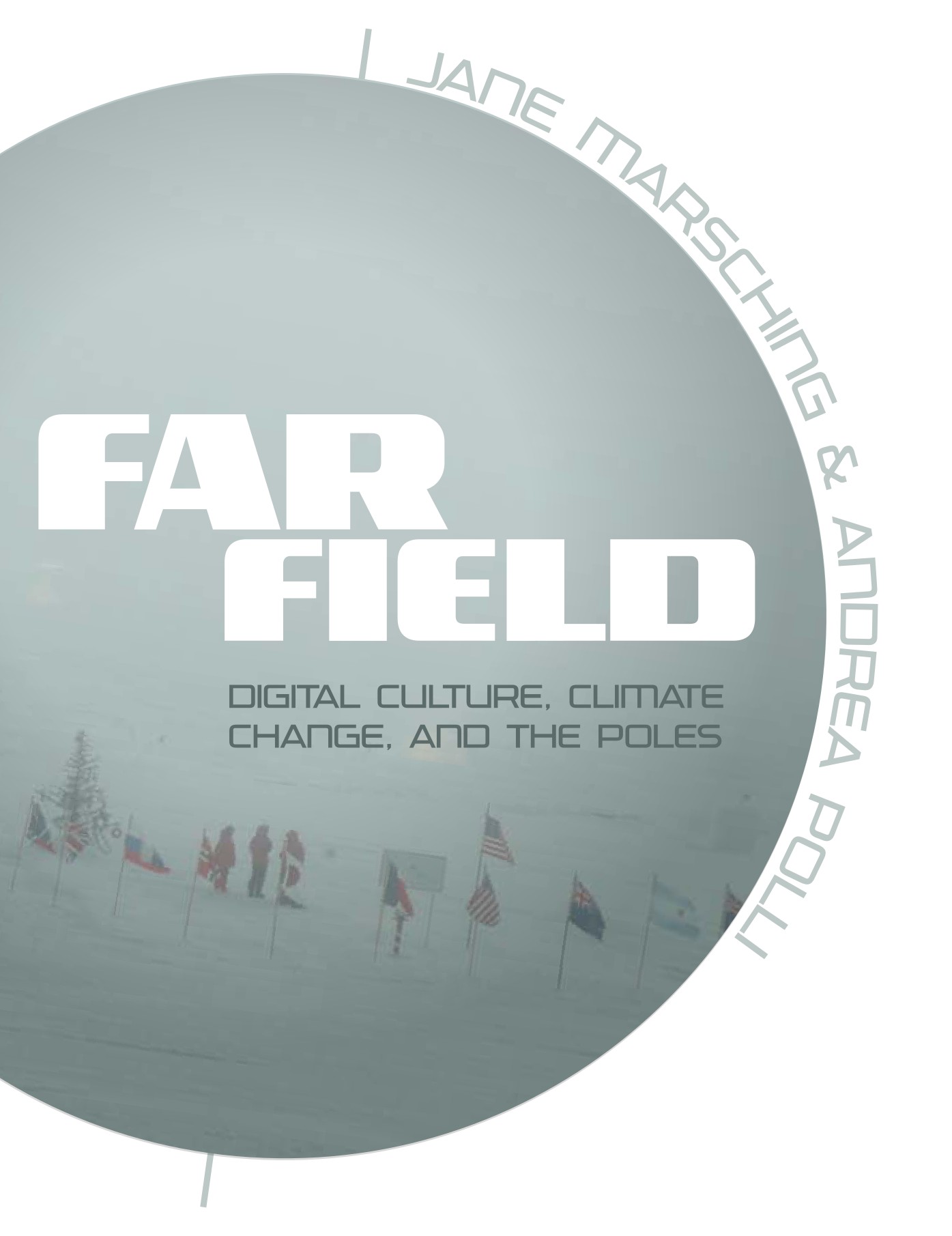
Far Field: Digital Culture, Climate Change, and the Poles, the book Andrea Polli wrote based on her research in the poles.
In a conversation about reducing emissions, Polli highlighted some key points concerning greenhouse gases. Back around 2010, she collaborated with scientists who were keeping an eye on air quality, especially looking at PM 2.5 — fine particulate matter over 40 times smaller than a grain of salt that mostly comes from burning fossil fuels. These tiny particles are so small that they can be inhaled and get stuck in the lungs or heart, which can lead to some serious health issues.
To help shine a light on the invisible threat of air pollution, Polli created the art installation called Particle Falls that was exhibited in various cities. She used sensors to track real-time PM 2.5 levels and turned that data into light projections on public buildings. The intensity of the display changed as pollution rose and fell. This way, people could visualize their local air pollution at any moment. Polli began with projection technology but later switched to LED lights for improved visibility and lower costs. Through this project, she developed a strong, clear way to see the effects of fossil fuel emissions on air quality in cities.
In her article for the RSA, Polli also said, “Air has been a metaphor for the soul and spirit throughout human history. It carries complex sounds and smells, and holds living genes and atomic histories.” This philosophy was made crystal clear in Particle Falls.
Particle Falls is one of many works that Polli did that have received support from municipalities. While most of her work has been with local governments, nonprofits, and advocacy groups, Polli said during the talk that she sees exciting opportunities to work with companies, as long as she can maintain her artistic integrity. Such collaborations would also be welcome from a financial standpoint.
Polli’s practice spans multiple media and objectives. After her presentation at FabCafe, one attendee asked how there could be such continuity in her work, and she responded that this was “an illusion” created by the presentation, as she believes there is no consistent throughline in her process. When she creates projects, her work flows between formats such as CDs, performances, and architectural projects, each tailored to its context.
This openness to shifting forms has helped her exploration of the unseen, leading her into new artistic territories, such as various artist residencies like the Cultivamos Cultura bioart program in Portugal. She began experimenting with bell sounds from the countryside there, analyzing their harmonics through spectrograms. This led to a series of sound-based visualizations, in which she explored how to represent the movement of air. She created 3D animations with an animator, then extracted stills from these animations, 3D printed them, and cast them into sculptural forms of glass and ceramic, some resembling natural forms or drops of water. In exhibitions, some of these pieces housed live spirulina algae that could clean and oxygenate the air.
-

A form that was later repurposed as a bread bowl. Image by Andrea Polli.
-

Glass sculpture with spirulina. Image by Andrea Polli.
Polli reflected on how exciting it is to work with living systems, and how sound, air, and material can intersect in both poetic and functional ways. “I’m really interested in the functionality,” she said, especially when living materials actively change their environment.
In her current residency at the Space Department in Nara, Japan, she expanded these ideas further. She explored spectrograms of Buddhist chants, translating them into 3D-printed forms, inspired by sacred stupa structures.
-

Chant spectrogram.
-

3D stupa render.
Polli also experimented with embedding air into materials, such as foam glass and biofoam, and grew increasingly fascinated with the relationship between life, minerals, and form. As for why she chose to work with biofoam, she explained, “I teach bio art and design, but I’d never worked with biofoam before. Being in Japan, where agar has such a rich history, seemed like the perfect opportunity. I was drawn to the unexpected results. Plus, I thought it might be easier to create large-scale pieces with it compared to glass or ceramics, though I was surprised to find it shrinks a lot, about 50 percent!” For Polli, Earth’s mineral diversity, caused by life itself, perfectly captures the biological and material aspects of her work.
Her biofoam experiments combined sustainability and play. Polli’s biofoam is made from biodegradable materials like agar, glycerin, and natural colorants and used for toys, lights, and edible sculptures. At a public event called Biofoam Happy Hour during the residency, visitors interacted with the foam, watched live demos, and even tasted it in flavored forms like margarita and chocolate.
Polli believes that art must do more than symbolize: it should intervene and provoke change. She sees data visualization as a way to help people both see and feel the abstract effects of environmental issues. Her work consistently embraces interdisciplinary collaboration, integrating science, art, and public interaction. Andrea Polli’s work reveals the possibilities and the tensions within environmental art. She achieves the goal of turning the invisible visible while challenging her audience to turn moments of awareness into sustained change.
-
Andrea Polli
Environmental artist
Andrea Polli <andreapolli.com> is an artist and scholar working at the intersection of art, science and technology whose practice includes media performance and installation, public interventions, curating and writing. She is a Professor of Art Studio with a joint appointment between Fine Arts and Engineering, the Mesa Del Sol Endowed Chair of Digital Media at The University of New Mexico. She holds a doctorate in practice-led research from the University of Plymouth in the UK and an MFA in Time Arts from the School of the Art Institute of Chicago.
Polli’s work with art/science, technology has been presented widely in exhibitions and performances internationally including the Whitney Museum of American Art and has been recognized by numerous grants, residencies and awards including NYFA and UNESCO. Among other organizations, she has worked with the NASA/Goddard Institute Climate Research Group and the National Center for Atmospheric Research and her artwork and research has been funded by The National Endowment for the Arts (NEA), The National Science Foundation (NSF) and Fulbright including two over $1.5 million projects: the NEA-supported ISEA2012: Machine Wilderness.
Her work has been reviewed by the Los Angeles Times, Art in America, Art News, NY Arts and others. Her latest books are Far Field: Digital Culture, Climate Change and the Poles and Hack the Grid.
Andrea Polli <andreapolli.com> is an artist and scholar working at the intersection of art, science and technology whose practice includes media performance and installation, public interventions, curating and writing. She is a Professor of Art Studio with a joint appointment between Fine Arts and Engineering, the Mesa Del Sol Endowed Chair of Digital Media at The University of New Mexico. She holds a doctorate in practice-led research from the University of Plymouth in the UK and an MFA in Time Arts from the School of the Art Institute of Chicago.
Polli’s work with art/science, technology has been presented widely in exhibitions and performances internationally including the Whitney Museum of American Art and has been recognized by numerous grants, residencies and awards including NYFA and UNESCO. Among other organizations, she has worked with the NASA/Goddard Institute Climate Research Group and the National Center for Atmospheric Research and her artwork and research has been funded by The National Endowment for the Arts (NEA), The National Science Foundation (NSF) and Fulbright including two over $1.5 million projects: the NEA-supported ISEA2012: Machine Wilderness.
Her work has been reviewed by the Los Angeles Times, Art in America, Art News, NY Arts and others. Her latest books are Far Field: Digital Culture, Climate Change and the Poles and Hack the Grid.
-
Hanna Gabo Karaso
Intern, FabCafe Tokyo
Hanna is a freelance artist and student at the La Salle campus of the University in Barcelona, studying digital art with the hope of becoming a concept artist. She is interning at FabCafe Tokyo for summer 2025.
As a freelance artist, Hanna takes character design and illustration commissions on the platform vgen.Hanna is a freelance artist and student at the La Salle campus of the University in Barcelona, studying digital art with the hope of becoming a concept artist. She is interning at FabCafe Tokyo for summer 2025.
As a freelance artist, Hanna takes character design and illustration commissions on the platform vgen.


